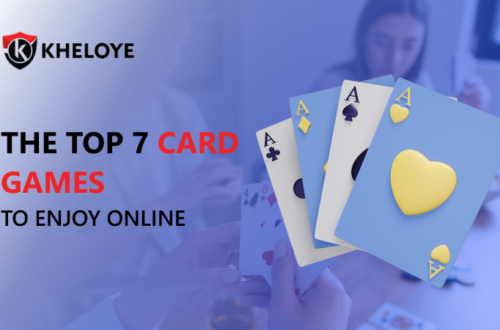Solitaire, often referred to as “Patience” in some parts of the world, is a classic card game that has captured the hearts and minds of players for generations. With its simple rules, challenging gameplay, and solitary nature, solitaire has become a beloved pastime for people of all ages. In this article, we will explore the history, variations, benefits, and enduring appeal of this timeless card game.
A Brief History of Solitaire
The exact origins of solitaire are shrouded in mystery, but the game’s history can be traced back several centuries. Some historians believe that solitaire has its roots in ancient card games played in Europe and Asia. The game as we know it today began to take shape in the 18th century in Europe.
Solitaire masters gained popularity in France during the 18th century, where it was known as “Patience.” The game was initially played with a standard deck of playing cards and quickly spread to other European countries. It wasn’t until the late 19th century that solitaire made its way to the United States, where it became a staple in homes and offices alike.
In the digital age, solitaire became one of the most iconic computer games, first included in the Microsoft Windows operating system in 1990. Its inclusion on millions of computers worldwide introduced the game to a whole new generation of players and contributed to its enduring popularity.
Solitaire Rules and Gameplay
Solitaire is a single-player card game that is relatively easy to learn but can be surprisingly challenging to master. The basic version of the game, known as Klondike, is played with a standard deck of 52 playing cards. The objective is to move all the cards to four foundation piles, one for each suit (hearts, diamonds, clubs, and spades), in ascending order from Ace to King.
Here’s a simplified step-by-step guide to playing Klondike solitaire:
1. Deal out seven columns of cards, with the first column containing one card, the second containing two cards, and so on, until the seventh column has seven cards. All cards are face down except for the top card in each column, which is face up.
2. The remaining deck of cards serves as the draw pile. You can draw one card at a time from the draw pile and place it face-up on a separate pile.
3. The goal is to move cards between columns and the four foundation piles to arrange them in ascending order by suit. You can move cards onto other cards in descending order and alternating colors (e.g., a black 7 can be placed on a red 8).
4. Empty columns can be filled with any King or a sequence of cards starting with a King.
5. As you uncover and move cards, you can reveal new cards from the draw pile.
6. Continue to make moves and build up the foundation piles until all cards are sorted by suit and in ascending order from Ace to King.
7. If you successfully complete this task, you win the game!
Variations of Solitaire
While Klondike solitaire is the most well-known and widely played version, there are numerous variations of solitaire, each with its own unique rules and challenges. Some popular variations include:
1. Spider Solitaire: Played with two decks of cards, Spider Solitaire is known for its complexity and requires players to arrange cards in descending order by suit. The goal is to build eight sequences of cards, starting with King and ending with Ace.
2. Freecell: In Freecell, all 52 cards are dealt face-up, and players must move cards to build four foundation piles in ascending order by suit. The catch is that you can only move one card at a time and have four open cells to temporarily hold cards.
3. Pyramid Solitaire: In this variation, a pyramid of cards is dealt, and players must remove pairs of cards that add up to 13 (e.g., King and Ace, 10 and 3, etc.). The goal is to clear the pyramid.
4. TriPeaks: TriPeaks is a variation where players must clear a tableau of cards by moving them to the waste pile in ascending or descending order. The goal is to clear all the cards from the tableau.
5. Golf Solitaire: Golf Solitaire is played with a tableau of seven columns of cards, and the goal is to move cards to the foundation pile by rank, regardless of suit. The player’s score is determined by the number of cards left on the tableau.
Benefits of Playing Solitaire
Solitaire is more than just a fun and challenging card game; it offers several benefits for players of all ages:
1. Mental Stimulation: Solitaire requires strategic thinking and problem-solving skills. Players must plan their moves carefully to win the game, which can help improve cognitive abilities, such as concentration and memory.
2. Stress Relief: Solitaire’s solitary nature makes it an excellent game for relaxation and stress relief. Focusing on the game can provide a mental break from the challenges of daily life.
3. Entertainment: Solitaire is a timeless game that can be enjoyed anytime, anywhere. Whether you’re waiting for an appointment or have some downtime at home, it’s a great way to pass the time.
4. Improved Patience: As the name “Patience” suggests, solitaire teaches players to be patient and persistent. Winning a game often requires multiple attempts and careful planning.
5. Social Connection: While solitaire is typically a solitary game, it can also be a social activity when played in person or online. Sharing strategies and competing with friends and family can enhance the gaming experience.
The Enduring Appeal of Solitaire
Solitaire’s enduring appeal lies in its simplicity, accessibility, and the satisfaction of completing a challenging game. Here are some reasons why solitaire continues to captivate players of all ages:
1. Accessibility: All you need to play solitaire is a standard deck of playing cards or a computer or smartphone with the game installed. It’s a game that’s readily available to nearly everyone.
2. Solitary Enjoyment: Solitaire is a game you can play by yourself, making it an ideal pastime for introverts or those seeking a moment of solitude.
3. Quick Play Sessions: A game of solitaire can take just a few minutes or stretch into a longer session, depending on your preference and available time.
4. Mental Workout: Solitaire provides a mental workout, stimulating your brain and keeping your mind sharp. It’s a great way to challenge yourself and stay mentally engaged.
5. Timeless Classic: Solitaire’s timeless appeal has transcended generations. Many people have fond memories of playing the game with their grandparents, parents, or friends, creating a sense of nostalgia and tradition.
6. Competitive Spirit: Whether you’re trying to beat your own best score or competing against others on digital platforms, solitaire can ignite your competitive spirit and drive you to improve.
Conclusion
Solitaire, the age-old card game known for its simplicity and elegance, has stood the test of time. Its enduring appeal can be attributed to its accessibility, mental benefits, and the satisfaction it provides to players of all ages. As we continue to embrace modern technology, solitaire remains a beloved classic, a reliable companion during moments of leisure, and a timeless source of enjoyment for generations to come. So, the next time you find yourself with a deck of cards or a digital device, consider indulging in a game of solitaire—it’s not just a game; it’s a cherished tradition.




